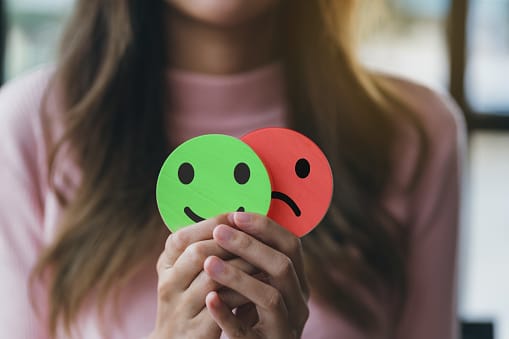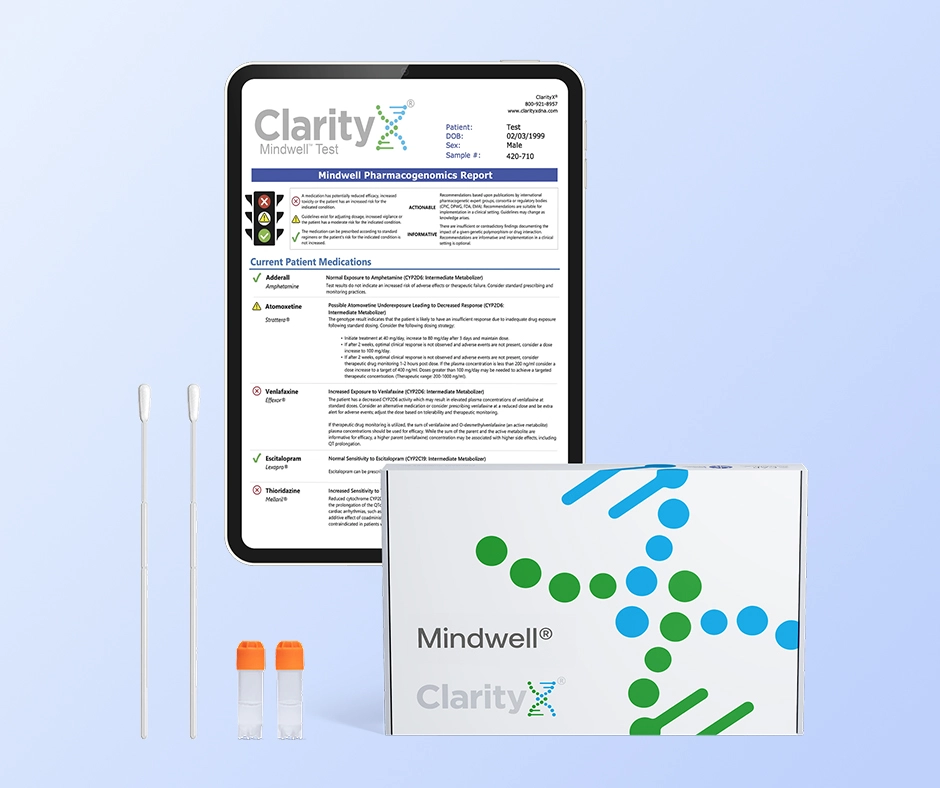Key Highlights
- Klonopin® (clonazepam) and Xanax® (alprazolam) are both benzodiazepines that affect the central nervous system.
- Klonopin is primarily used to treat seizure disorders and panic disorder, while Xanax is commonly prescribed for anxiety disorders.
- The effects of Klonopin last longer than Xanax, which means it does not need to be taken as frequently throughout the day.
- Both medications have the potential for dependence and withdrawal symptoms, but Xanax may cause more severe rebound and withdrawal effects.
- Working with a healthcare provider to determine the best medication and dosage for your specific condition is important.
Introduction
When it comes to managing anxiety and related disorders, medications like Klonopin and Xanax can be valuable treatment options. These drugs, known as benzodiazepines, work by enhancing the activity of a neurotransmitter called gamma-aminobutyric acid (GABA) in the brain, helping to calm the central nervous system (CNS) and alleviate symptoms of anxiety and panic. While Klonopin and Xanax have similar mechanisms of action, they have some key differences that are important to understand when considering which medication may be right for you. Additionally, it is important to note that these medications may have interactions with other drugs, such as tricyclic antidepressants, and it is crucial to consult with a healthcare professional before taking them.
In this blog, we will delve into the similarities and differences between Klonopin and Xanax, exploring their uses, mechanisms of action, side effects, and potential for abuse and addiction. We will also discuss medical conditions that can be effectively treated with these medications and provide guidance on how to choose between them. It is important to note that both Klonopin and Xanax are prescription drugs, and it is crucial to consult with a healthcare professional before starting or changing any medication regimen.
Understanding Klonopin and Xanax
Klonopin and Xanax are both benzodiazepines, a class of drugs commonly prescribed for the treatment of anxiety and related disorders. These medications work by enhancing the activity of GABA, a neurotransmitter that helps regulate the excitability of nerve cells in the CNS. By increasing GABA activity, Klonopin and Xanax help reduce the overactivity of nerve cells that can contribute to anxiety and panic, resulting in a calming effect.
Klonopin, also known by its generic name clonazepam, is primarily used to treat seizure disorders, such as epilepsy, and panic disorder. It is available in tablet form and is typically taken orally. Klonopin is a controlled substance classified as a Schedule IV medication, indicating a moderate potential for abuse and dependence. It is important to understand the different types of seizures that Klonopin can treat and to follow the prescribed dosage and schedule when taking the medication to minimize the risk of adverse effects.
Xanax, or alprazolam, is commonly prescribed for anxiety disorders, including generalized anxiety disorder (GAD) and panic disorder. It is available in both immediate-release and extended-release oral tablets and an oral solution. Xanax is also classified as a Schedule IV controlled substance due to its potential for abuse and addiction. It is essential to take Xanax as prescribed by a healthcare provider and to avoid increasing the dosage without medical supervision.
Both Klonopin and Xanax can be effective in managing anxiety-related symptoms, but they have some notable differences in terms of their onset of effects, duration of action, and specific uses. Understanding these differences, as well as consulting with a healthcare professional, can help individuals make informed decisions about the most appropriate prescription medication for their anxiety.
Overview of Klonopin
Klonopin, or clonazepam, is a benzodiazepine medication commonly prescribed for the treatment of seizure disorders and panic disorder. It works by enhancing the activity of GABA in the CNS, reducing the overactivity of nerve cells that can lead to seizures or panic attacks.
Klonopin is available in tablet form and is typically taken orally. Its effects can last up to 12 hours, making it a longer-acting benzodiazepine than Xanax. This means Klonopin does not need to be taken as frequently throughout the day to maintain its therapeutic effects.
As a controlled substance, Klonopin is classified as a Schedule IV medication by the U.S. Drug Enforcement Administration (DEA). This classification reflects its potential for abuse and dependence, although it is generally considered to have a lower risk compared to Schedule II or III substances. It is important to follow the prescribed dosage and schedule when taking Klonopin and to consult with a healthcare provider if there are any concerns about its use.
Overview of Xanax
Xanax, or alprazolam, is a benzodiazepine medication primarily prescribed for the treatment of anxiety disorders, including generalized anxiety disorder (GAD) and panic disorder. Like Klonopin, Xanax enhances the activity of GABA in the CNS, helping to reduce anxiety and alleviate symptoms of panic.
Xanax is available in immediate-release and extended-release oral tablets and an oral solution. The effects of Xanax typically last 4 to 6 hours, making it a shorter-acting benzodiazepine compared to Klonopin. This means that a dose of Xanax will affect you for a few hours and may need to be taken more frequently throughout the day to maintain its therapeutic effects.
Similar to Klonopin, Xanax is classified as a Schedule IV controlled substance due to its potential for abuse and dependence. It is important to use Xanax as prescribed by a healthcare provider and to avoid increasing the dosage without medical supervision. Xanax should only be used for short-term treatment of anxiety disorders and not for long-term use or as a substitute for proper psychological therapy.
Due to its potential to elicit rapid-onset, reinforcing euphoric effects, Xanax has a relatively high addiction liability among the entire benzodiazepine class. Understanding the differences between Klonopin and Xanax, including their potential for addiction, is crucial for those considering these medications for anxiety treatment.
Key Differences between Klonopin and Xanax
While Klonopin and Xanax are both benzodiazepines that work by enhancing GABA activity in the CNS, there are several key differences between these medications. Klonopin is primarily used to treat seizure disorders and panic disorder, while Xanax is commonly prescribed for generalized anxiety disorder (GAD). The effects of Klonopin last longer than Xanax, which means it does not need to be taken as frequently throughout the day. Understanding the differences between these two commonly prescribed anxiety medications can help individuals make informed decisions about their treatment options.
Mechanism of Action
Klonopin and Xanax have similar mechanisms of action, as they both belong to the benzodiazepine class of drugs. These medications enhance the activity of GABA, a neurotransmitter that inhibits the activity of nerve cells in the CNS. By increasing GABA activity, Klonopin and Xanax help reduce the overactivity of nerve cells that can contribute to anxiety and panic.
GABA acts as an inhibitory neurotransmitter, meaning it decreases the excitability of nerve cells. It does this by binding to specific receptors on the surface of nerve cells, which opens channels that allow negatively charged chloride ions to enter the cell. This influx of chloride ions hyperpolarizes the nerve cell, making it less likely to fire and transmit signals.
By enhancing GABA activity, Klonopin and Xanax help calm the CNS and alleviate symptoms of anxiety and panic. However, it is important to note that prolonged use of these medications can lead to tolerance, dependence, and withdrawal symptoms. For this reason, these medications are often recommended for the short-term management of symptoms while longer-term therapies take effect.
Seizures are characterized by rapid, uncoordinated firing of neurons. Similar to the way benzodiazepines cause a calming effect in anxiety, they can reduce the excitability of neurons and make them less likely to fire uncontrollably, helping to manage seizure disorders.
It is crucial to work with a healthcare provider to determine the appropriate dosage and duration of treatment, especially when considering the potential interactions with other CNS depressants like alcohol and opioids, to minimize these risks.
Onset of Effects
The onset of effects is an important consideration when comparing Klonopin and Xanax. While both medications enhance GABA activity in the CNS, they have different absorption and onset of action rates.
Xanax is generally more quickly absorbed than Klonopin, with peak concentrations occurring within 1-2 hours after administration. The effects of Xanax typically last 4 to 6 hours, but individual variations can occur.
On the other hand, Klonopin has a slower onset of action, with peak concentrations occurring within 1-4 hours after administration. The effects of Klonopin can last up to 12 hours, making it a longer-acting benzodiazepine compared to Xanax.
The differences in onset of effects and duration of action can impact the dosing frequency of these medications. Xanax may need to be taken more frequently throughout the day to maintain its therapeutic effects, while Klonopin can be taken less often due to its longer-lasting effects. It is important to follow the prescribed dosage and schedule a healthcare provider recommends to ensure optimal treatment outcomes.
Conditions Treated by Klonopin and Xanax
Klonopin and Xanax are both prescribed for the treatment of various conditions related to anxiety and the CNS. Klonopin is primarily used to treat seizure disorders, such as epilepsy, and panic disorder. Xanax, on the other hand, is commonly prescribed for anxiety disorders, including generalized anxiety disorder (GAD) and panic disorder. Both medications can be effective in managing symptoms associated with these conditions, but it is important to consult with a healthcare provider to determine the most appropriate treatment option for an individual's specific condition. It is also important to note that while both drugs are FDA-approved for anxiety and panic disorders, they are non-FDA-approved for insomnia, meaning they have not been specifically approved for this particular use.
Anxiety Disorders
Anxiety disorders are a group of mental health conditions characterized by excessive worry, fear, and apprehension. They can significantly impact a person's daily life and overall well-being. Klonopin and Xanax are commonly prescribed medications for the treatment of anxiety disorders, helping to alleviate symptoms and improve quality of life.
Klonopin is primarily used to treat panic disorder, a type of anxiety disorder characterized by recurrent panic attacks. Panic attacks are sudden episodes of intense fear and discomfort, including symptoms such as rapid heartbeat, shortness of breath, trembling, and a sense of impending doom. Klonopin is also used to treat other anxiety disorders, including restless leg syndrome, by enhancing the activity of GABA in the CNS.
Xanax is also prescribed for the treatment of anxiety disorders, including generalized anxiety disorder (GAD) and panic disorder. GAD is characterized by excessive worry and anxiety about everyday events and activities. Xanax helps alleviate symptoms of GAD by enhancing GABA activity and reducing the overactivity of nerve cells in the CNS.
It is important to note that while Klonopin and Xanax can provide relief from the symptoms of anxiety disorders, they should be used as part of a comprehensive treatment plan that may include therapy, lifestyle changes, and other interventions. Working with a healthcare provider to determine the most effective treatment approach for an individual's specific condition is essential.
Panic Disorders
Panic disorder is a type of anxiety disorder characterized by recurrent panic attacks. These panic attacks are sudden episodes of intense fear and discomfort that can be accompanied by physical symptoms such as rapid heartbeat, shortness of breath, trembling, and a sense of impending doom. Klonopin and Xanax are commonly prescribed medications for the treatment of panic disorder, helping to alleviate symptoms and improve overall well-being.
With its longer duration of action, Klonopin can be an effective treatment option for panic disorder. By enhancing the activity of GABA in the CNS, Klonopin helps reduce the overactivity of nerve cells, which can contribute to panic attacks. Regular use of Klonopin can help decrease the frequency and severity of panic attacks, allowing individuals to regain control of their lives.
Xanax is also prescribed for the treatment of panic disorder. Like Klonopin, Xanax enhances GABA activity in the CNS, helping to reduce anxiety and alleviate symptoms of panic. However, Xanax has a shorter duration of action compared to Klonopin, which means it may need to be taken more frequently throughout the day to maintain its therapeutic effects.
It is important to work with a healthcare provider to determine the most appropriate medication and dosage for the treatment of panic disorder. In some cases, a combination of medication and therapy may be recommended to effectively manage symptoms and improve quality of life.
Comparison of Effectiveness for Specific Conditions
When comparing the effectiveness of Klonopin and Xanax for specific conditions, factors such as the individual's medical history, symptoms, and response to medication must be considered. While both medications can be effective in managing anxiety-related symptoms, certain conditions may respond better to one medication than the other.
It is important to note that this table provides a general overview and that individual responses to medication can vary. Working closely with a healthcare provider is crucial to determine the most appropriate treatment option for a specific condition. They can provide personalized recommendations based on an individual's unique medical history and symptoms.
Side Effects of Klonopin vs. Xanax
Like all medications, Klonopin and Xanax can cause side effects. These medications' most common side effects include drowsiness, dry mouth, dizziness, and changes in appetite or weight. The rates of short-term side effects are generally similar between the two medications.
Common Side Effects
Common side effects of Klonopin and Xanax may include:
- Drowsiness
- Dry mouth
- Dizziness
- Changes in appetite or weight
- Nausea or upset stomach
It is important to note that not everyone will experience these side effects, and they may vary in severity. If any side effects become bothersome or persist, consulting with a healthcare provider is crucial. They can provide guidance on managing side effects, including difficulty breathing, or adjust the medication dosage if necessary.
It is important to use Klonopin and Xanax as prescribed by a healthcare provider and to avoid increasing the dosage without medical supervision. Abruptly stopping these medications can lead to withdrawal symptoms, such as increased anxiety, irritability, and sleep disturbances. Because Xanax is removed from the body more quickly, withdrawal can potentially occur more rapidly and with stronger side effects. It is essential to work closely with a healthcare provider to safely discontinue or adjust the dosage of these medications according to the doctor’s instructions to minimize the risk of withdrawal symptoms.
Long-term Health Impacts
Long-term use of Klonopin and Xanax can have potential effects on mental health and physical well-being, including the development of suicidal thoughts. Prolonged use of these medications can lead to tolerance, dependence, and withdrawal symptoms when the medication is discontinued. It is important to work closely with a healthcare provider to manage the dosage and duration of treatment to minimize these risks.
In terms of mental health, long-term use of benzodiazepines like Klonopin and Xanax has been associated with memory problems and cognitive impairment, particularly in older adults. These medications can also contribute to sedation and drowsiness, potentially affecting daily functioning and quality of life. There is also a higher potential for falls due to dizziness and drowsiness.
Physical dependence on Klonopin and Xanax can occur with prolonged use, and sudden discontinuation can lead to withdrawal symptoms. These symptoms can include increased anxiety, irritability, insomnia, and tremors. It is crucial to work with a healthcare provider to slowly taper off the medication and minimize the risk of withdrawal symptoms.
Potential for Abuse and Addiction
Both Klonopin and Xanax have the potential for abuse and addiction. Benzodiazepines, including these medications, can be habit-forming when taken at higher dosages or for longer periods of time. It is important to use these medications as prescribed by a healthcare provider and to avoid increasing the dosage without medical supervision.
It’s important to note that Klonopin may have a stronger potential for dependency and misuse, specifically because of its longer duration of action. Withdrawal effects can take longer to occur and be comparatively less severe, which may make it more appealing to those at risk of addiction. If there are concerns about the potential for abuse or addiction, it is crucial to consult with a healthcare provider for guidance and support.
Understanding the Risk Factors
Various factors can influence the risk of abuse and addiction to Klonopin and Xanax. Risk factors for abuse and addiction to benzodiazepines include:
- Personal or family history of substance abuse
- Concurrent use of other substances, such as alcohol or opioids
- Taking higher doses or using the medication more frequently than prescribed
- Using the medication for recreational purposes
- Using the medication to self-medicate or cope with emotional or psychological distress
Combining benzodiazepines like Xanax and Klonopin with other substances like alcohol or opioids is particularly dangerous. This can lead to additive central nervous system depression, which can ultimately cause you to slow down or stop sending the signals that tell your body to keep breathing. This is called respiratory depression and is the reason why these combinations can be deadly. Combining substances like these is, unfortunately, a common reason for overdose and emergency department visits.
It is important to be aware of these risk factors and to communicate openly with a healthcare provider about any concerns or questions regarding the use of Klonopin or Xanax. They can provide guidance on the safe and responsible use of these medications and offer support for addressing any underlying issues related to substance abuse or addiction.
Signs of Dependence and Withdrawal Symptoms
Dependence on Klonopin and Xanax can occur with prolonged use, and abrupt discontinuation of these medications can lead to withdrawal symptoms. Signs of dependence on these medications may include:
- Needing higher doses to achieve the same effect
- Experiencing withdrawal symptoms when attempting to reduce or stop the medication
- Preoccupation with obtaining and using the medication
Withdrawal symptoms from Klonopin and Xanax can include increased anxiety, irritability, insomnia, tremors, and gastrointestinal distress. These symptoms can be severe and prolonged, requiring medical attention.
If dependence or withdrawal symptoms are a concern, it is crucial to consult with a healthcare provider for guidance and support. They can provide a tapering schedule to safely reduce the dosage of the medication and minimize the risk of withdrawal symptoms. It is important to follow their instructions closely and seek medical attention if withdrawal symptoms become severe or unmanageable.
How to Choose Between Klonopin and Xanax
Choosing between Klonopin and Xanax depends on various factors, including the specific condition being treated, the individual's medical history, their response to medication, and the cost of the medication. Working closely with a healthcare provider to determine the most appropriate treatment option is important. Factors to consider may include the medication's effectiveness for a particular condition, the potential side effects, and the individual's preferences and lifestyle. Additionally, it is important to note that generic versions of medications are generally less expensive than brand-name versions, so considering the cost may also be a factor in the decision-making process.
Factors to Consider
When choosing between Klonopin and Xanax, several factors should be considered:
- The specific condition being treated: Klonopin is primarily used for seizure disorders and panic disorder, while Xanax is commonly prescribed for anxiety disorders.
- Individual response to medication: Some individuals may respond better to one medication than another based on factors such as metabolism and tolerance.
- Potential side effects: Both medications can cause side effects, and the severity and frequency of these side effects can vary between individuals.
- Dosage and frequency of administration: Klonopin has a longer duration of action and does not need to be taken as frequently as Xanax.
- Because Xanax is removed from the body more quickly, it may lead to more rapid or severe withdrawal in individuals with an established dependency.
- Personal preferences and lifestyle: Factors such as convenience, dosing schedule, and medication form may influence an individual's preference for one medication over the other.
Discussing these factors with a healthcare provider to determine the most appropriate treatment option for a specific condition is important. They can provide personalized recommendations based on an individual's unique medical history and needs.
Consulting with Healthcare Professionals
When considering the use of Klonopin or Xanax, it is crucial to consult with a healthcare professional. A healthcare provider, such as a doctor or psychiatrist, can evaluate an individual's specific condition, medical history, and treatment goals to determine the most appropriate medication and dosage.
Working with a healthcare provider offers several benefits, including:
- Expert guidance: Healthcare professionals have the knowledge and experience to assess the risks and benefits of Klonopin and Xanax and provide personalized recommendations.
- Individualized treatment plans: Healthcare providers can develop treatment plans that consider an individual's unique needs, preferences, and lifestyle.
- Monitoring and adjustment: Healthcare professionals can monitor the medication's effectiveness and adjust the dosage or treatment plan as needed.
- Safety and support: Healthcare providers can provide guidance on the safe use of Klonopin or Xanax, including information on potential side effects, drug interactions, and proper administration.
It is important to follow a healthcare provider's instructions and attend regular follow-up appointments to ensure the medication's effectiveness and minimize potential risks or adverse effects.
Conclusion
In conclusion, understanding the differences between Klonopin and Xanax is crucial for making informed decisions regarding treatment. While both medications are effective in managing anxiety and panic disorders, their mechanisms of action, onset of effects, side effects, and potential for abuse vary.
Consulting with healthcare professionals is essential to determine the most suitable option based on individual needs and considerations. Remember, always prioritize your well-being and seek professional guidance when deciding between these medications. Your health and mental well-being are paramount, so make informed choices that align with your specific health requirements.
Frequently Asked Questions
Can Klonopin or Xanax be used for long-term treatment?
Both Klonopin and Xanax can be used for long-term treatment in some instances; however, it is important to use the lowest possible dosage and under the supervision of a healthcare provider. Long-term use of these medications can lead to dependence, withdrawal symptoms, and potential side effects. Particularly when used for anxiety management, they are often recommended for short-term use while longer-term therapy becomes established.
How do I know if Klonopin or Xanax is right for me?
The decision between Klonopin and Xanax should be made in consultation with a healthcare provider. They will consider factors such as your medical history, symptoms, and response to medication. It is essential to discuss any concerns or questions you may have to ensure the most appropriate treatment option. Sometimes the decision can be practical, such as the need for more short-term support during a particular event (like airline travel). Variability in the duration of action can provide more targeted therapy for a specific time frame while minimizing side effects like drowsiness.
Can I switch from Klonopin to Xanax or vice versa?
Switching from Klonopin to Xanax or vice versa should only be done under the guidance of a healthcare provider. They can provide recommendations and a tapering schedule to safely transition between medications, considering factors such as dosage, duration of treatment, and potential withdrawal symptoms.
What should I do if I experience severe side effects from either medication?
If you experience severe side effects from Klonopin or Xanax, it is important to seek medical attention immediately. Contact your healthcare provider or go to the nearest emergency room if symptoms are severe or life-threatening. Shallow, labored breathing is a sign of respiratory depression, which can be particularly dangerous. Healthcare providers can offer appropriate medical care and guidance based on your specific situation.
https://www.ncbi.nlm.nih.gov/books/NBK482238/
https://www.ncbi.nlm.nih.gov/pmc/articles/PMC5846112/
https://medlineplus.gov/druginfo/meds/a682279.html
https://www.nlm.nih.gov/medlineplus/druginfo/meds/a684001.html
https://www.dea.gov/drug-scheduling
https://www.dea.gov/factsheets/benzodiazepines
https://www.ncbi.nlm.nih.gov/pmc/articles/PMC6007645/
https://nida.nih.gov/publications/drugfacts/prescription-cns-depressants
https://www.psychiatry.org/patients-families/anxiety-disorders/what-are-anxiety-disorders
https://www.nimh.nih.gov/health/publications/panic-disorder-when-fear-overwhelms





